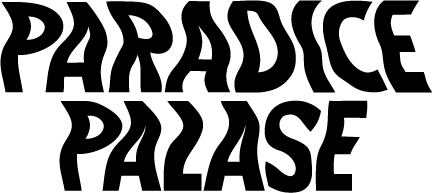Interview: Naomi Frank
Naomi Frank is a Brooklyn-based artist raised in the San Francisco Bay Area. Naomi received a BA in theater with a minor in fine art from USC in 2009 and an MFA from Pratt in 2018. Naomi’s artistic practice explores existential anxieties by evoking the visual language of Western religion, spiritualism, and natural history, revealing how these cultural coping mechanisms elide or embrace the fear of death. Naomi’s work has been shown locally at Pratt Manhattan Gallery, Chashama, the High Line Nine Galleries, Amos Eno, First Street Gallery, The Boiler, Project for Empty Space’s Gateway Gallery, Bessie’s Brooklyn, Trestle Gallery, and Mount Rose Space. Naomi has completed residencies at Byrdcliffe, Chashama’s ChaNorth, Vermont Studio Center, and Trestle Art Space.
Read our interview with Naomi below!
detail from mixed-media installation Fragments Shored Against my Ruin
PP: Walk us through a typical day in your studio or generally through your process to make new work.
NF: I typically already have an idea and images in my mind before I start a piece. I’ll gather my materials and I often start with a sketch or mocking up different visual elements in ProCreate on my tablet. From there, it’s easy for me to get into the zone, usually while listening to a podcast. One interesting thing I’ve found is that I’ll later associate whatever part of the image I was working on at the time with what I was listening to. I often am working on more than one piece, but I usually stick to just one of them in a studio day and don’t switch between.
The Resurrectionist, Watercolor on paper, 18 x 24 inches
Severence, Watercolor on paper, 15 x 21 inches
PP: What motivates you to make art?
NF: I love the experience of sharing some thought or experience that I thought was unique to me and finding out how universal it is. That kind of communion is what I seek in my art. I’m trying to be vulnerable and share my anxieties and concerns with others so I and whomever is looking at my art can have that cathartic experience that comes with being validated by another person.
PP: Who or what has had the biggest impact on your creative practice?
NF: I had a professor in grad school who was pushing me to get out of my comfort zone. I was at a point in my practice where I felt like I had run out of ideas and I wanted to express what was important to me but I didn’t feel like I really knew what that was, artistically at least. My professor asked me, “what do you actually care about?” Which was easy for me to answer in life in general, but not everything that I care about motivates me artistically or brings visual images to mind. However, I spent a long time thinking about my professor’s question and I realized how much of my time and life are spent deep in anxiety and concern about death and the desire to evade it, while knowing that it is impossible. I decided to make work about this, and came to the realization that both the denial of the reality of death and the desire to control one’s life in order to stave off death are at the root of so much toxicity in society. I’m glad this professor helped me find such rich conceptual territory to explore.
The Spirits Take Form IV, Scratchboard, 14 x 18 inches
PP: What is your process for critiquing your own work?
NF: Evaluating my work objectively is actually quite instinctive for me, although until a few years ago I didn’t quite know why I liked some of my works and not others. The success of any given composition is quite obvious, but a few years ago, I realized that having the correct balance between specificity and ambiguity was key to my work. This can be difficult for me, since my work is largely representational, but I figured out that things can be visually clear without their precise meaning being equally specific, and the less I try to interrogate my own choices, the more clear they are in the final product, as where my instinct guides me is usually to the most universal place - when I go unquestioningly with my own seemingly idiosyncratic choices, I end up with the most relatable images. I believe this is due to a common humanity, but it remains somewhat inexplicable that the most successful works of mine are the ones that I thought about the least as I was making them.
PP: What is your favorite medium and why?
NF: I absolutely love scratchboard. I first encountered it in graduate school. I had a drawing professor who was an absolute master. I suppose I had done some version of it with colored pencils and crayons as a child, but the professional grade material is a of different class entirely. I love the velvety black matte surface, and the precision I can achieve with tiny knife blades is so appealing to me. It’s perfect for rendering hair and feathers, and even softer elements like smoke can come through with delicate crosshatching. I started working with it on a series inspired by Victorian spiritualist mediums, but I’ve continued as I’ve further developed my concepts, and since done a lot of birds and botanical specimens. I still haven’t tired of it. Silverpoint is supposed to be similar; I want to try it next!
To learn more about Naomi’s work, see her Instagram and Website




